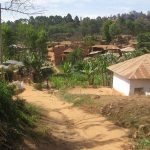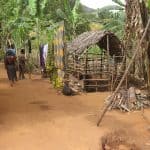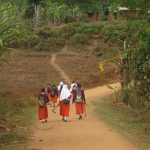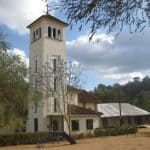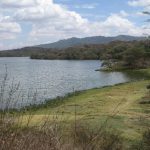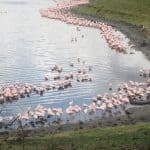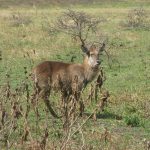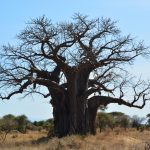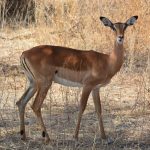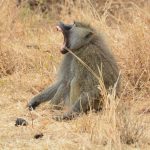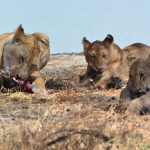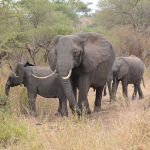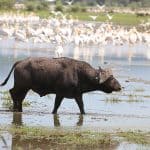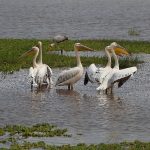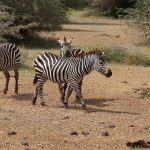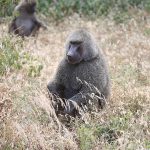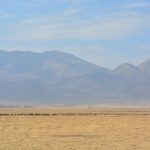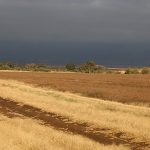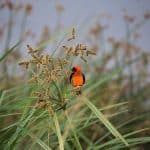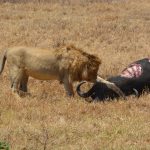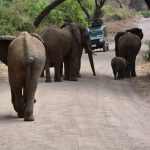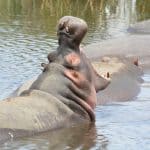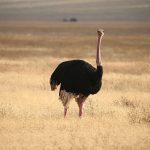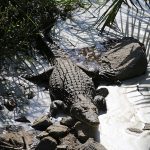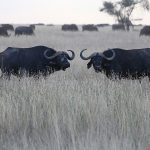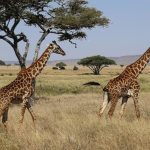Uganda – National Parks
Uganda - National Parks
Bwindi Impenetrable National Park
Located in the extreme southwest, Bwindi National Park is about 300 m² in size and offers original and very old tropical and almost impenetrable rainforest. In 1991 the area was declared a national park and in 1994 it was added to the UNESCO World Natural Heritage List. The jungle extends from 1160 to about 2600 m.
Most tourists come to this protected area to see the last remaining mountain gorillas. More than half of the estimated 600 mountain gorillas in the world live here. Selected trails lead to the various mountain gorilla families accustomed to human observation.
Tracking tours with limited permits can be organized. Walking for several hours can be very strenuous and requires discipline and endurance, but will be rewarded with the fascination these mountain gorillas exude. The National Park is also home to chimpanzees as well as forest pigs, forest elephants, various cats of prey, other species of monkeys and many other animals.
The National Park can be visited all year round, with each travel season having its advantages and disadvantages. Although it rains particularly frequently in April/May and October/November and tracking becomes more difficult due to the muddy paths, a visit during this time can be especially attractive due to the low number of visitors.
Murchinson Falls National Park
With 3900 m ² the largest of all national parks of Uganda gives at animal variety everything to everything that is connected with a safari. Lions, leopards, buffalos, elephants, hippos, hyenas and many more. The scenic highlight is probably the Murchinson Falls (waterfalls), where the white Nile plunges down several steps in a narrow place. Northwest at the northern tip of Lake Albert, the park is easily accessible by land from Kampala. Alternatively you can arrive by chartered bush plane.
The park can be visited all year round. The best time to visit is during the dry season from December to February and June/July.
Queen Elizabeth National Park
Even more varied, though only half the size of Murchinson Falls and the second largest national park is Queen Elizabeth National Park. The park in the west is divided into a northern and a southern half, which have very different ecosystems. On nearly 2000 km² you can find grass savannahs, open bush land, river and lake landscapes, craters as well as wetlands in the immediate vicinity. The Kazinga channel forms the dividing line and should definitely be explored with a boat safari. Over 550 bird species, hippos, buffalos and crocodiles can be observed from the safety of the boat from close range. The park is easily accessible by car from Kampala in about 6 hours. Charter flights are also possible.
Kidepo Valley National Park
The third largest, the Kidepo National Park, is located in a very remote area in the extreme northeast on the border to Sudan and Kenya. Its climate is rather dry (semi-arid) and differs greatly from the parks in the west and southwest. In the landscape similar to semi-desert, elephants, zebras, giraffes, buffalos and antelopes as well as ostriches, leopards, cheetahs and over 500 bird species romp around.
The journey with the car takes 2 days, therefore a charter flight with 2 hours is recommendable. Best time to travel is the dry season from December to April.
Kibale National Park
North of Queen Elizabeth National Park is Kibale National Park, which was declared a national park in 1993. It extends over 766 km² and is covered by indigenous, evergreen humid forests and deciduous forests. Swamps and grassland dominate the rest of the area. The national park is famous for its chimpanzees which can be visited during a chimpanzee trekking. From Kampala the park can be easily reached and visited all year round. In the rainy season of April/May and October/November the nights can get quite cool.
Ruwenzori National Park
The 996 km² Rwenzori National Park protects the central area of the mountain range of the same name on the border with the Democratic Republic of Congo. The Margeritha Peak of Mt. Stanley with its 5109 m is the third highest mountain in Africa. Due to its height, it naturally has different vegetation zones such as mountain and bamboo forests as well as herbaceous tree plants and alpine high altitude vegetation.
Mountain hikers and mountaineers appreciate the interesting routes along with a unique flora. In approx. 5 days the mountain can be climbed in a circular course, where you will stay overnight in hiking huts. The best time to go there is in mid-August or mid-December. Outside of these times you have to expect a lot of precipitation.
The entrance areas of the park are easy to reach by car on paved roads. In Kasese there is also a small landing strip for charter planes.
Lake Mburo National Park
The almost 260 km² large national park has an incredibly high population of Impala antelopes. These feel visibly comfortable in the savannahs covered with acacia trees. Furthermore there are also some leopards, waterbucks, hyenas and zebras living there. The scenic highlight of the national park is Lake Mburo. This can be explored by boat. Surrounded by further lakes and swampland, the landscape is quite varied.
Semliki National Park
This with 220 km² quite small national park is located at an average of only 700 m. Accordingly, its climate is warm and humid and often around 30°C hot. The park is interspersed with rainforest and is part of the ecosystem of the Ituri forest in the Congo. With 300 tree species, of which about one third are endemic, its diversity is enormous. Also the fauna with 65 mammal species and about 400 bird species makes the park very worth seeing. As part of the African Rift Valley, the park also has hot springs and geysers. The park can be explored on hikes lasting several days, where you will stay overnight in simple tents.
Best time to travel is in June/July and from December to February. Nevertheless, rain should be expected at any time.
Mgahinga Gorilla National Park
The small Mgahinga Gorilla National Park (34km²) was founded in 1991 and is part of the protected area of the Virunga Volcanoes. These are mainly located in Rwanda and the Congo. The three volcanic peaks Mt. Muhavura (4127m), Mt. Sabinyo (3645m) and Mt. Gahinga (3474m) shape the breathtaking mountain landscape. The volcanoes can be climbed in one day and offer spectacular views. But also in the lower altitudes you will be rewarded with a variety of flora and fauna on the many hiking trails. Due to the altitude, the climate is moderate or cool and very humid. At night it can get very cold.
In addition to the Bwindi National Park, gorilla trekking is also possible here as an alternative. Here, however, the conditions might be a bit more difficult due to the terrain. As there is currently only one family of rare mountain gorillas in the park, which is used to humans and which also moves freely in the border areas in Rwanda and Congo, it is possible that you will not encounter the gorillas during a trek. If you want to be sure to experience the mountain gorillas, you should visit the Bwindi National Park with about 300 mountain gorillas. The rainy season is in April/May and October/November. January and June to August are the best times to visit the park.
Mount Elgon National Park
The Mount Elgon National Park (1146km²) is named after the 4321 m high Mt Elgon. Millions of years ago it was probably even higher than Kilimanjaro and therefore the highest mountain in Africa, until its peak collapsed and a unique, huge caldera with 5 peaks and crater lakes was formed. Awaiting the hiker is a rarely beautiful landscape dotted with waterfalls, caves, gorges, hot springs and still original mountain rainforests. Although these were also strongly pushed back by the agriculture.

